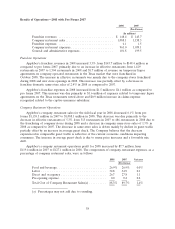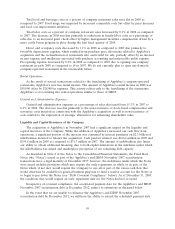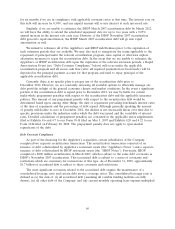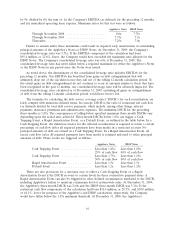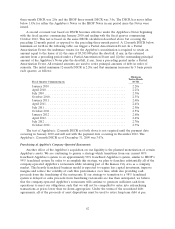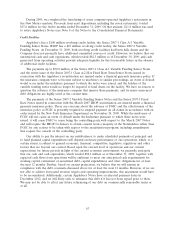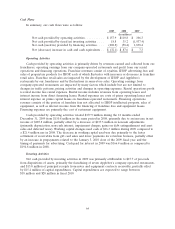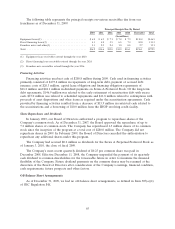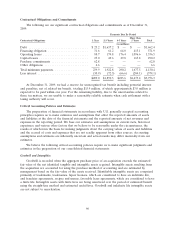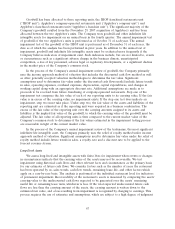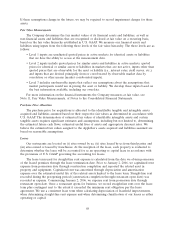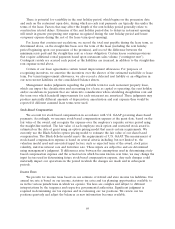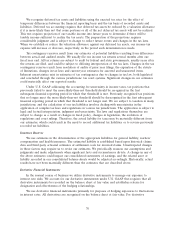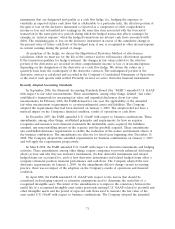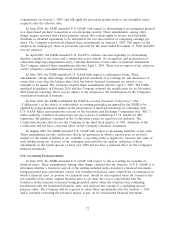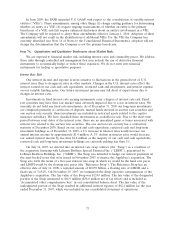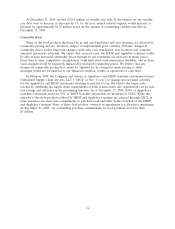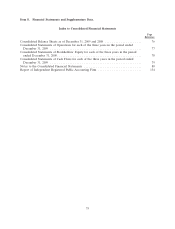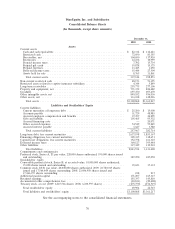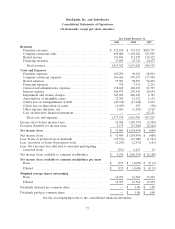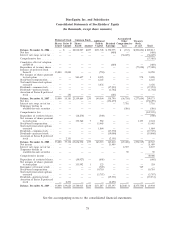IHOP 2009 Annual Report Download - page 87
Download and view the complete annual report
Please find page 87 of the 2009 IHOP annual report below. You can navigate through the pages in the report by either clicking on the pages listed below, or by using the keyword search tool below to find specific information within the annual report.If these assumptions change in the future, we may be required to record impairment charges for these
assets.
Fair Value Measurements
The Company determines the fair market values of its financial assets and liabilities, as well as
non-financial assets and liabilities that are recognized or disclosed at fair value on a recurring basis,
based on the fair value hierarchy established in U.S. GAAP. We measure our financial assets and
liabilities using inputs from the following three levels of the fair value hierarchy. The three levels are as
follows:
• Level 1 inputs are unadjusted quoted prices in active markets for identical assets or liabilities
that we have the ability to access at the measurement date.
• Level 2 inputs include quoted prices for similar assets and liabilities in active markets, quoted
prices for identical or similar assets or liabilities in markets that are not active, inputs other than
quoted prices that are observable for the asset or liability (i.e., interest rates, yield curves, etc.),
and inputs that are derived principally from or corroborated by observable market data by
correlation or other means (market corroborated inputs).
• Level 3 includes unobservable inputs that reflect our assumptions about the assumptions that
market participants would use in pricing the asset or liability. We develop these inputs based on
the best information available, including our own data.
For more information on the financial instruments the Company measures at fair value, see
Note 11, Fair Value Measurements, of Notes to the Consolidated Financial Statements.
Purchase Price Allocation
The purchase price for acquisitions is allocated to the identifiable tangible and intangible assets
acquired and liabilities assumed based on their respective fair values as determined in accordance with
U.S. GAAP. The determination of estimated fair values of identifiable intangible assets and certain
tangible assets requires significant estimates and assumptions, including but not limited to, determining
the estimated future cash flows, estimated useful lives of assets and appropriate discount rates. We
believe the estimated fair values assigned to the Applebee’s assets acquired and liabilities assumed are
based on reasonable assumptions.
Leases
Our restaurants are located on (i) sites owned by us, (ii) sites leased by us from third parties and
(iii) sites owned or leased by franchisees. At the inception of the lease, each property is evaluated to
determine whether the lease will be accounted for as an operating or capital lease in accordance with
the provisions of U.S. GAAP governing the accounting for leases.
The lease term used for straight-line rent expense is calculated from the date we obtain possession
of the leased premises through the lease termination date. Prior to January 2, 2006, we capitalized rent
expense from possession date through construction completion and reported the related asset in
property and equipment. Capitalized rent was amortized through depreciation and amortization
expense over the estimated useful life of the related assets limited to the lease term. Straight-line rent
recorded during the preopening period (construction completion through restaurant open date) was
recorded as expense. Commencing January 2, 2006, we expense rent from possession date through
restaurant open date. Once a restaurant opens for business, we record straight-line rent over the lease
term plus contingent rent to the extent it exceeded the minimum rent obligation per the lease
agreement. We use a consistent lease term when calculating depreciation of leasehold improvements,
when determining straight-line rent expense and when determining classification of our leases as either
operating or capital.
68


